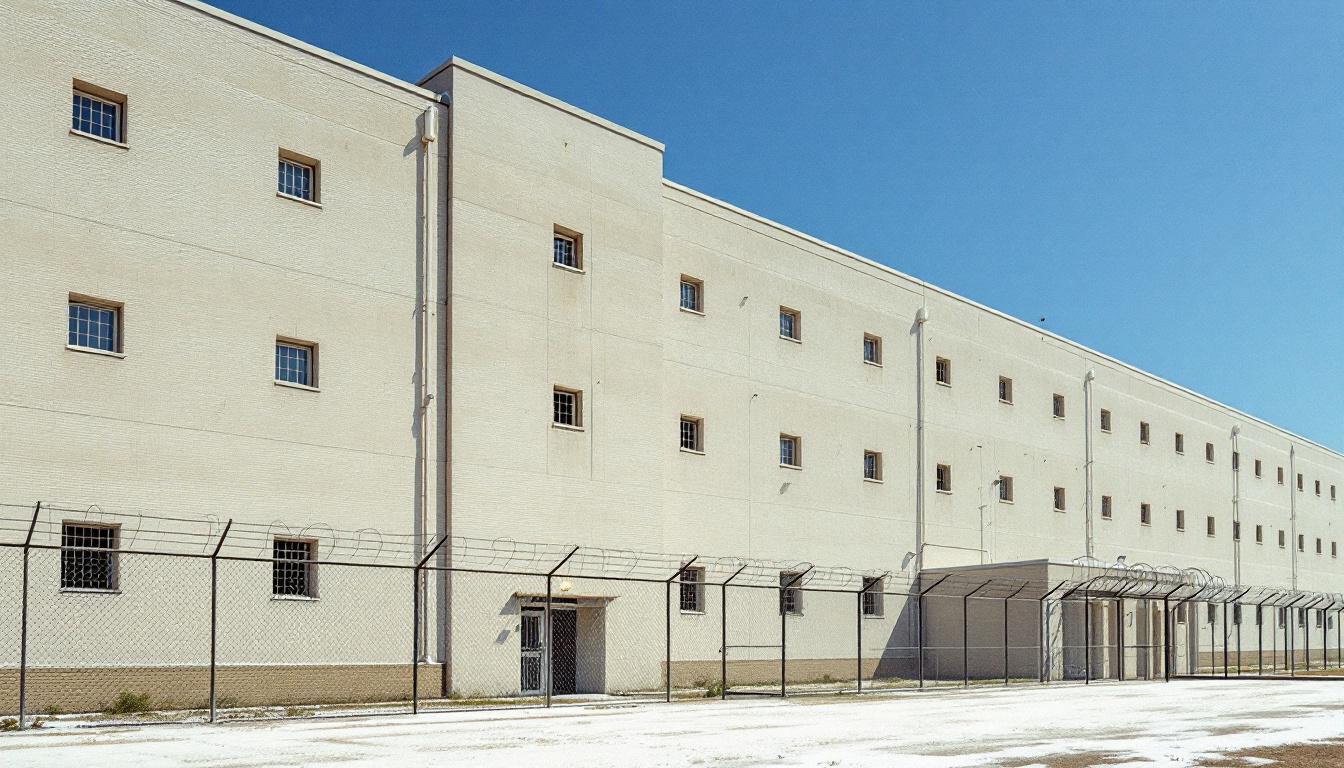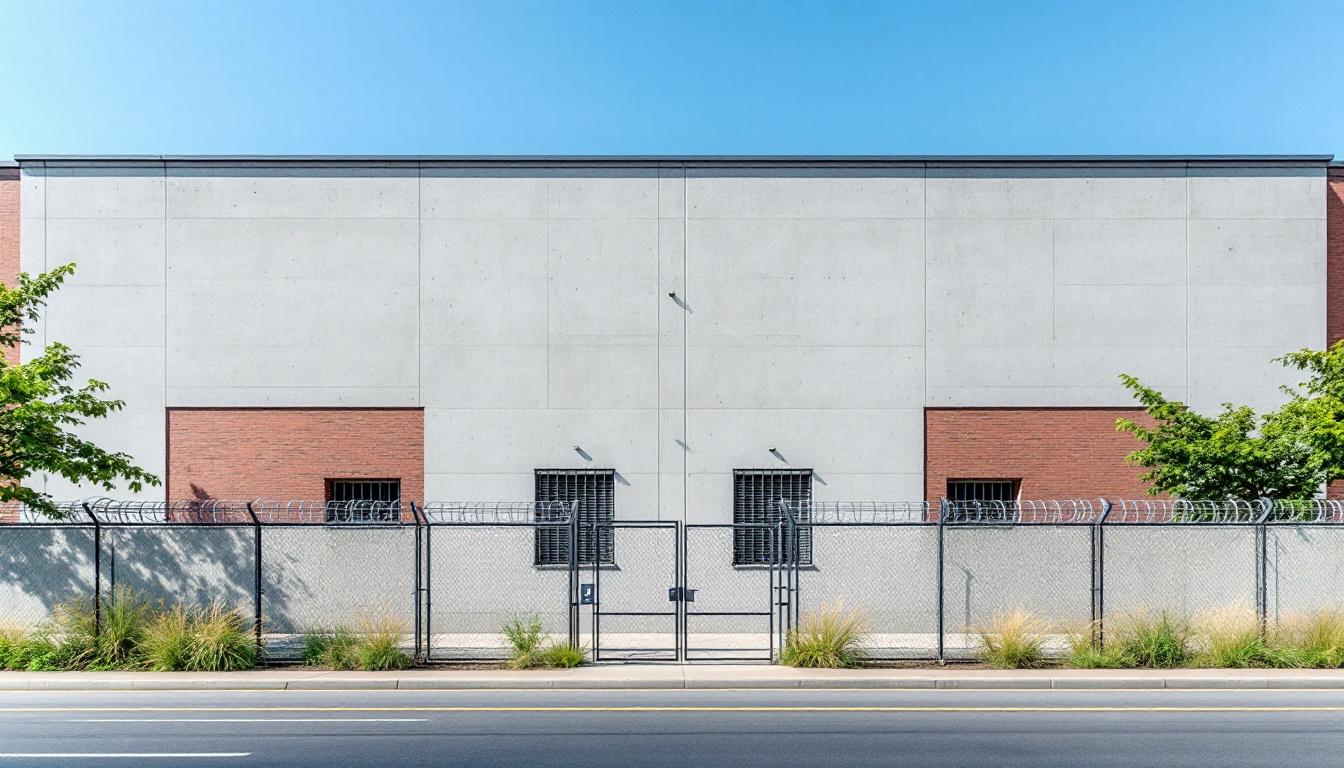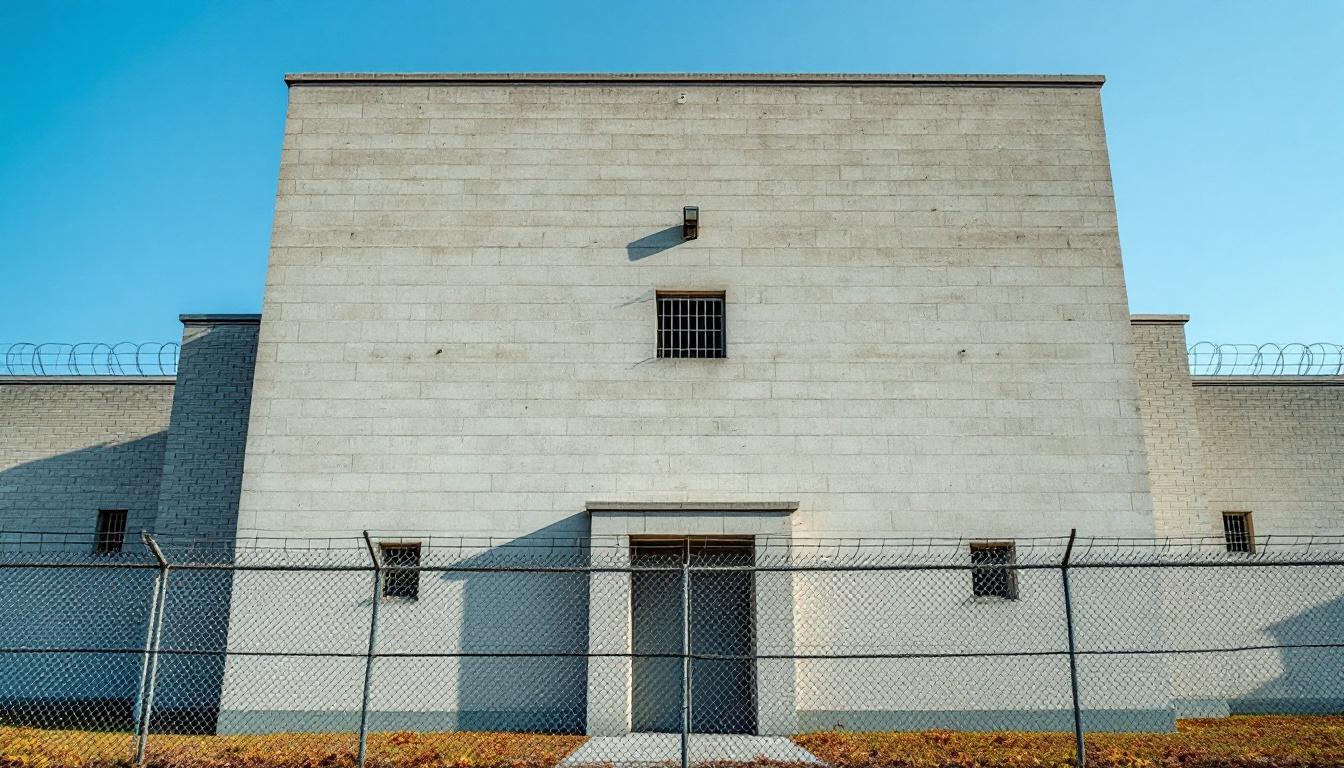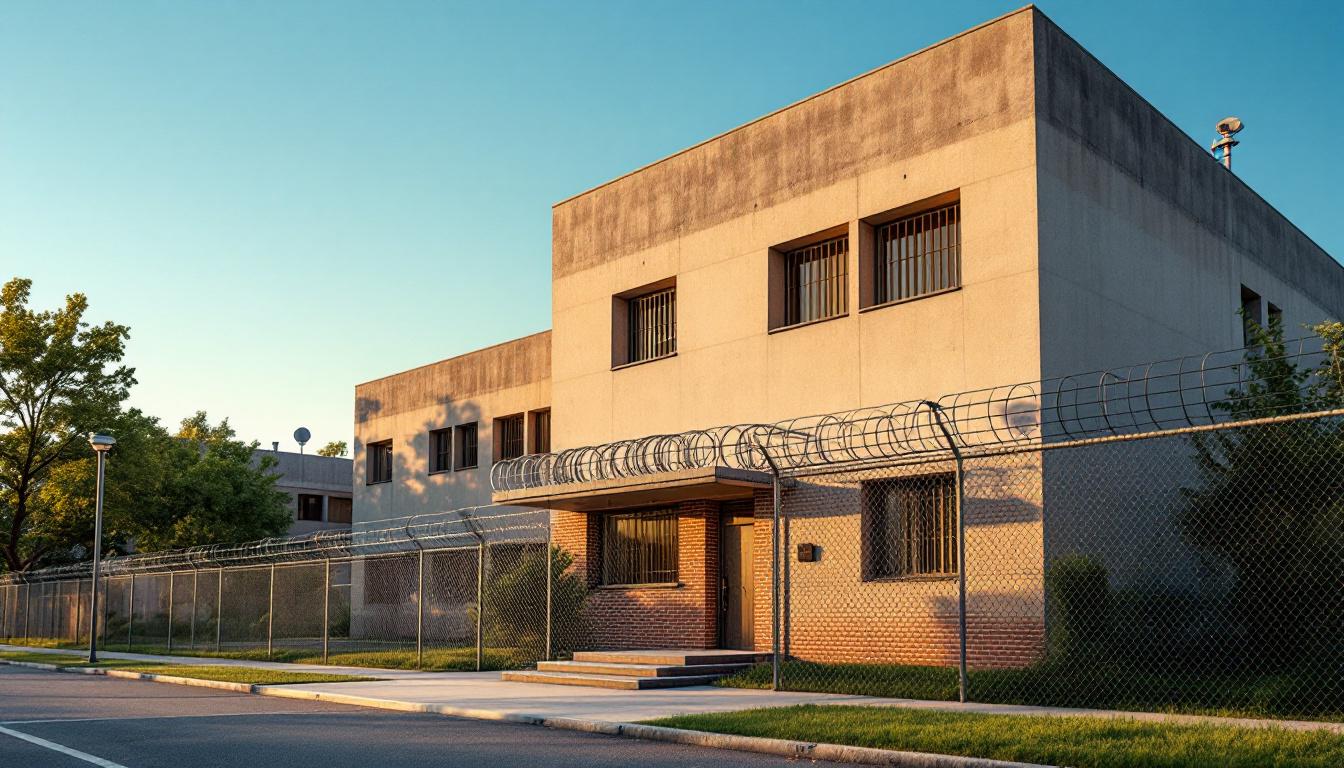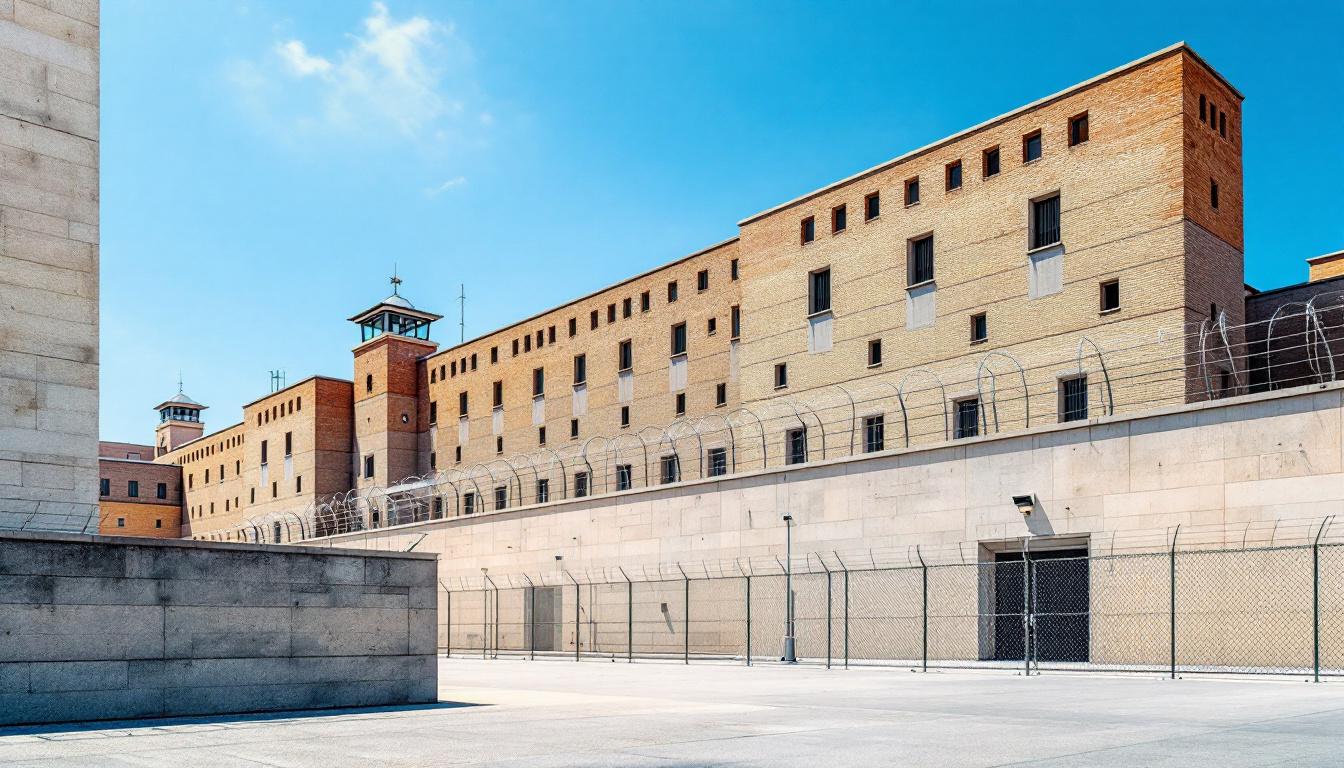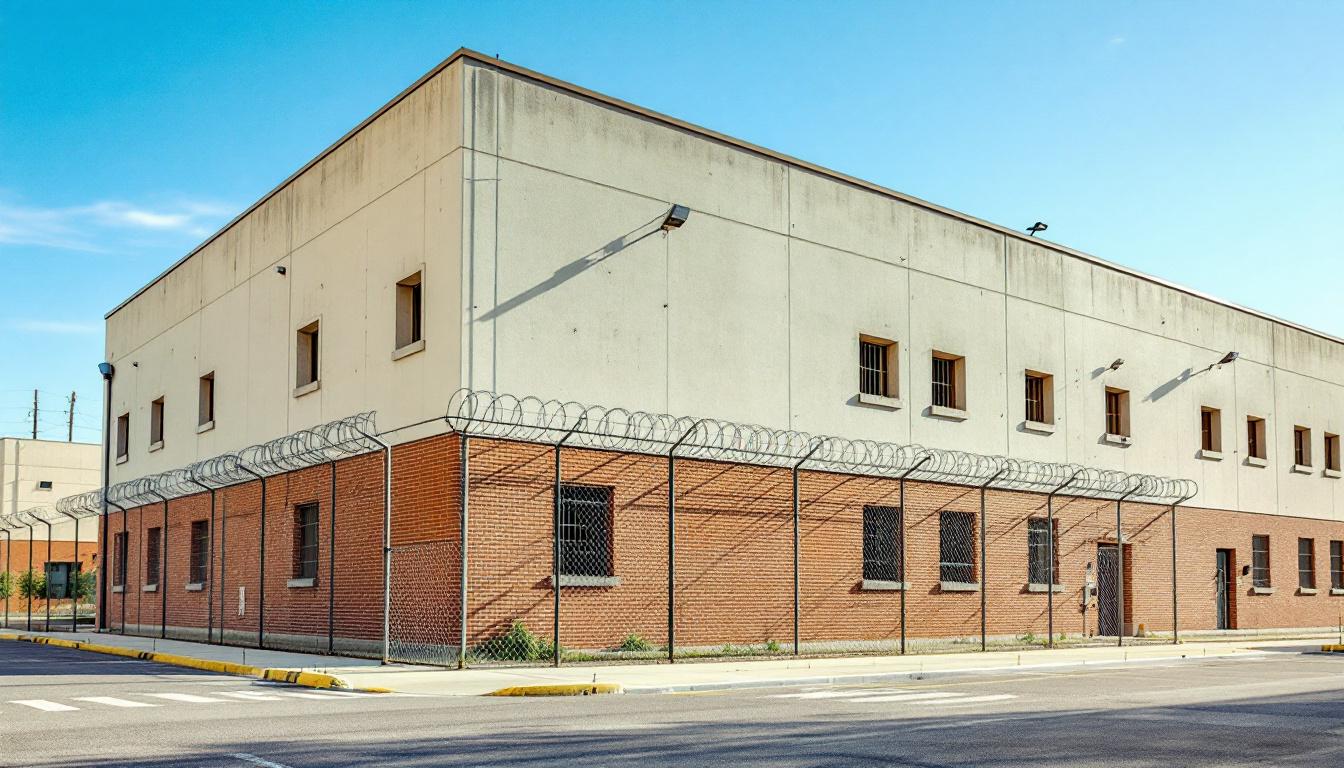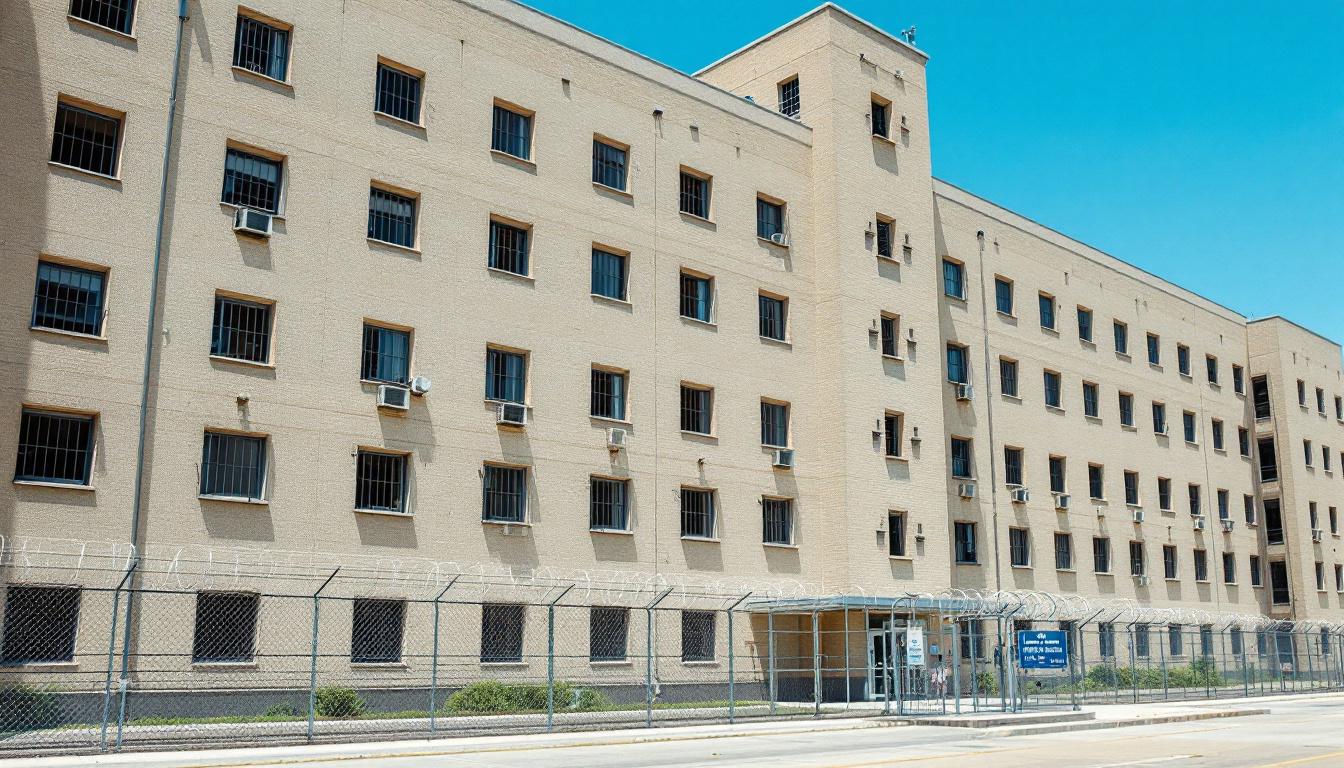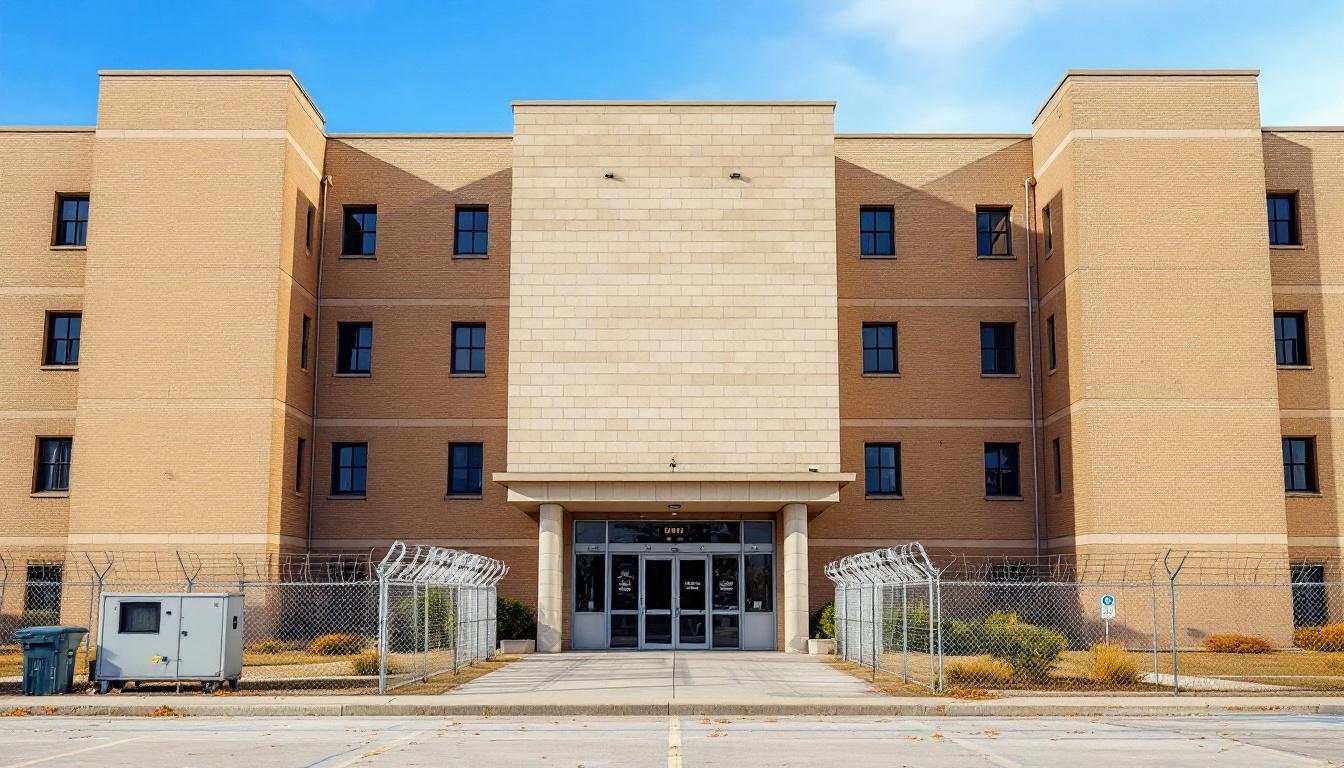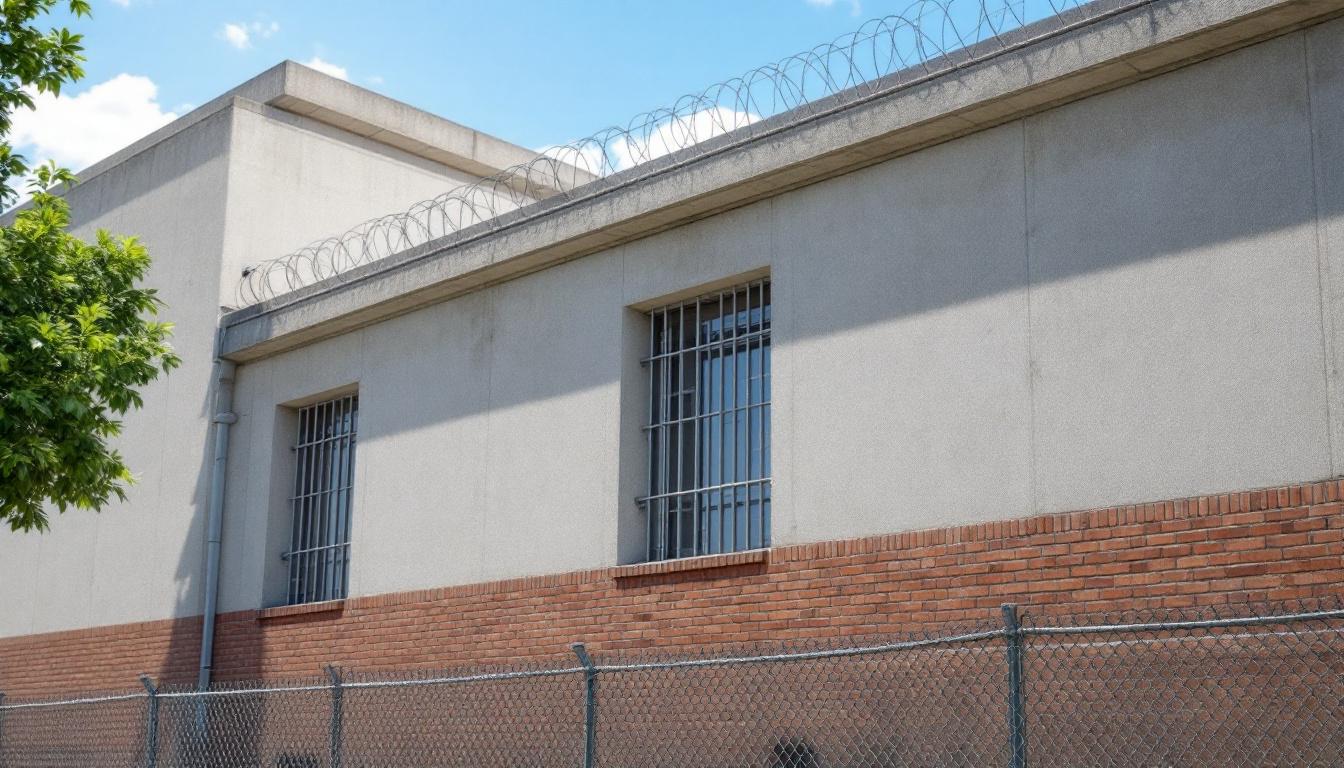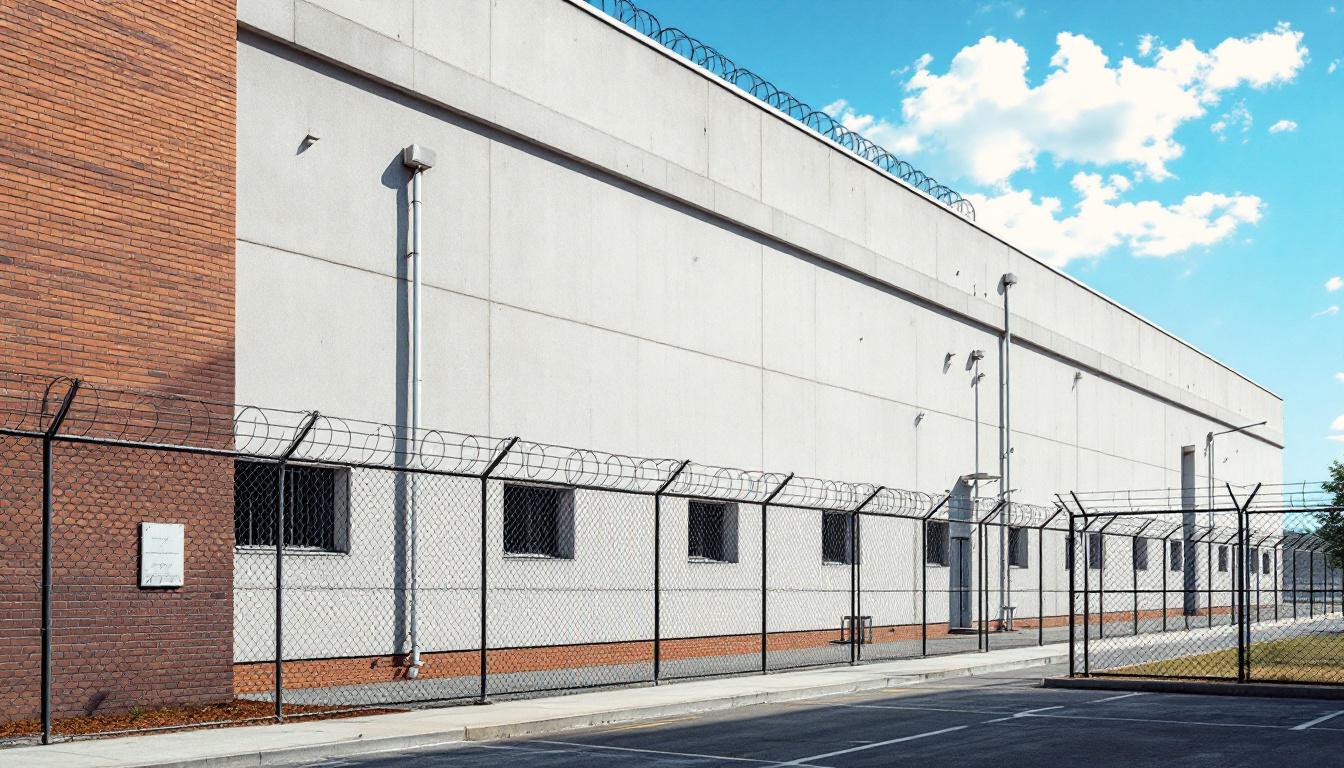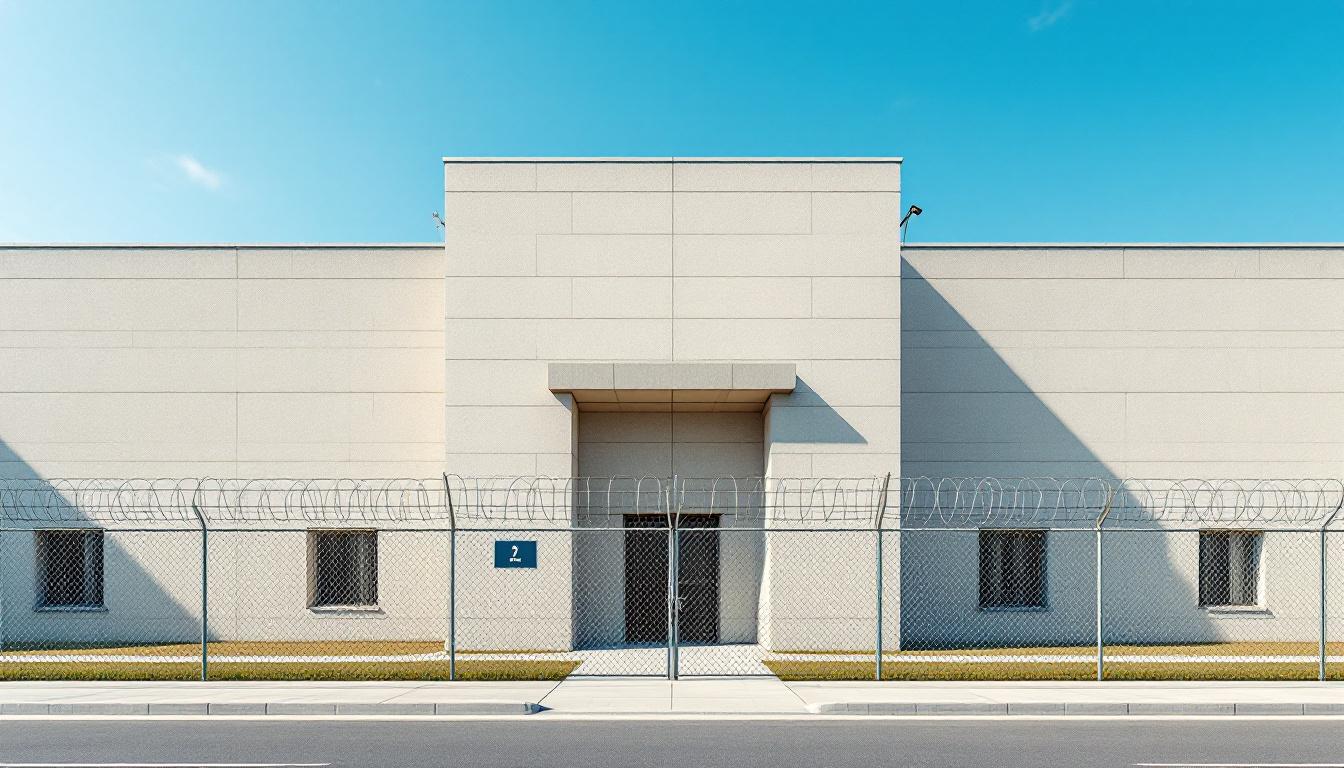
Quick Navigation
How to contact an inmate at High Desert Detention Center
This comprehensive guide will walk you through how to connect with an inmate at High Desert Detention Center. Follow the steps below to find an inmate and send letters and photos:
- Search for the inmate using our search tool below
- Create your account or log in to Penmate
- Write your message (up to 6,000 characters)
- Send instantly - inmates receive printed copies daily
Find an Inmate
Search for an inmate to start communicating today
Tip: You can search by first name, last name, or inmate ID number
To contact a person at High Desert Detention Center start by searching for the person on the official facility website. Perform a search by following these steps:
- Step 1: Enter their first name and last name into the search form and click "Search"
- Step 2: Locate their inmate record
- Step 3: Write down their Inmate ID and any housing information provided
Important! Be sure to enter the person's full name. Nicknames should not be used.
How to Send Messages to Inmates

You can use your phone or computer to send emails, letters, and photos to an inmate. Messages are sent electronically to inmate tablets or kiosks at the facility. If you would like to send a message, start by searching for an inmate at High Desert Detention Center.
Sending Photos and Postcards

A great way to send love and support to a loved one at High Desert Detention Center is to send photos and postcards. It only takes a few minutes to send photos from your phone and it makes a huge difference. You can also mail postcards with words of support and inspiration, or design your own postcard for special moments like birthdays and holidays.
Important! Be sure not to send any explicit photos or they may not be approved by the facility. You can also use a photo printing app like Penmate to make sure your photos are printed at the correct size (4x6 or 3x5) and are mailed according to the rules and regulations of High Desert Detention Center.
Frequently asked questions about High Desert Detention Center
-
How long does it take to deliver a message?
If you're sending an email message your letter is usually delivered within 24-48 hours. For messages sent via mail you should expect delivery within 3-7 days. All messages will need be approved by High Desert Detention Center.
-
How much does it cost to send a message to High Desert Detention Center?
You can send a message free using your phone or mail a message via USPS for the price of a $0.60 stamp and envelope. You can also purchase credits or e-stamps from services starting at $1.99.
-
What services can I use to contact an inmate at High Desert Detention Center?
Penmate
You can use Penmate to send letters and photos to an inmate from your phone. It's an easy way to stay in touch during your loved one's incarceration. Use the inmate locator to find an inmate's location and contact information, then you can send messages within a few minutes.
Securus messaging
Securus may be another option for communicating with an inmate at High Desert Detention Center. You can create a friends and family account and purchase credits to send messages. All messages will be reviewed and must be approved by the facility.
JPay
Some county jails and state prisons may support sending messages with JPay. You must register an account with the system, find your loved one, and purchase stamps to send messages. For some locations you can also attach photos.
Smart Jail Mail
You may also check if Smart Jail Mail is available at High Desert Detention Center. Smart Jail Mail is operated by Smart Communications and has contracted with some state and county jails. After purchasing credits, your messages and photos are sent to the facility, printed out, and then handed out to your loved one.
-
What is the mailing address of High Desert Detention Center?
Mailing address:
High Desert Detention Center
9438 Commerce Way
Adelanto, CA 92301
Phone: (760) 530-9300Business hours:
- Monday: Open 24 hours
- Tuesday: Open 24 hours
- Wednesday: Open 24 hours
- Thursday: Open 24 hours
- Friday: Open 24 hours
- Saturday: Open 24 hours
- Sunday: Open 24 hours
-
What are the visiting hours at High Desert Detention Center?
Visiting hours at High Desert Detention Center vary by housing unit and security level. Generally, visits are scheduled on weekends and holidays, with some facilities offering weekday visits. Contact the facility directly at (760) 530-9300 or check their website for the current visiting schedule. Visits typically last 30-60 minutes and must be scheduled in advance.
-
What items are prohibited when sending mail to High Desert Detention Center?
Prohibited items typically include: cash, personal checks, stamps, stickers, glitter, glue, tape, staples, paperclips, polaroid photos, musical or blank greeting cards, hardcover books, magazines with staples, and any items containing metal or electronics. Only send letters on plain white paper with blue or black ink. Photos must be printed on regular photo paper (no Polaroids). Always check with High Desert Detention Center for their specific mail policies.
-
How do I send money to an inmate at High Desert Detention Center?
You can send money to an inmate at High Desert Detention Center through several methods: 1) Online using JPay, Access Corrections, or the facility's approved vendor, 2) Money orders mailed directly to the facility with the inmate's name and ID number, 3) Kiosks located in the facility lobby, or 4) Over the phone using a credit or debit card. Fees vary by method, typically ranging from $2.95 to $11.95 per transaction.
-
Can I schedule a video visit with an inmate at High Desert Detention Center?
Many facilities now offer video visitation as an alternative to in-person visits. At High Desert Detention Center, video visits may be available through services like Penmate, Securus Video Connect, GTL, or ICSolutions. Video visits typically cost $10-20 for 20-30 minutes and must be scheduled in advance. You'll need a computer or smartphone with a camera and reliable internet connection. Contact the facility for their specific video visitation policies and approved vendors.
-
What identification do I need to visit an inmate at High Desert Detention Center?
All visitors must present valid government-issued photo identification such as a driver's license, state ID, passport, or military ID. Minors must be accompanied by a parent or legal guardian who can provide the minor's birth certificate. Some facilities require visitors to be on the inmate's approved visitation list, which may require a background check. Contact High Desert Detention Center for specific ID requirements and visitor approval procedures.
-
How can I find out an inmate's release date?
To find an inmate's release date at High Desert Detention Center, you can: 1) Use the online inmate search tool if available, 2) Call the facility's records department, 3) Contact the inmate's case manager or counselor, or 4) Have the inmate provide this information during a call or visit. For privacy reasons, some facilities only release this information to immediate family members.
Facility Overview
Contact Information
High Desert Detention Center9438 Commerce Way
Adelanto, CA 92301
Phone: (760) 530-9300
Official Website

About High Desert Detention Center
**Central Detention Center Overview**
Operating as both a county jail and federal detention facility, Central Detention Center serves as a crucial correctional hub in San Bernardino, California. Located at 630 East Rialto Avenue, this facility has evolved significantly since originally opening in 1971, when it served as the main county jail for over two decades. Following overcrowding challenges in the 1980s and a temporary closure due to budgetary constraints, the facility reopened in 1994 with a renewed mission that includes housing federal inmates under contract with the U.S. Marshal's Service.
Today, Central Detention Center houses over 200 federal inmates and more than 600 county inmates, functioning as the primary booking facility for police and sheriff stations operating in the east valley area. The facility processes more than 20,000 inmates annually and serves as a west coast hub for the U.S. Marshal's Service, facilitating the transportation and housing of federal inmates who arrive and depart daily from locations throughout the United States and Pacific Rim Islands. Federal grants and contract revenues have enabled significant retrofitting and facility upgrades over the years.
The facility demonstrates its commitment to rehabilitation and community connection through various programs designed to support both inmates and at-risk youth. Inmates may access educational opportunities including high school diploma programs and substance abuse intervention services. Additionally, Central Detention Center hosts numerous juvenile programs specifically designed for at-risk youth in the community, reflecting the facility's broader mission to serve the evolving correctional needs of San Bernardino County residents while supporting successful reintegration into the community.
Programs & Services
Educational opportunities form a cornerstone of rehabilitation efforts at Central Detention Center, with inmates able to earn their high school diploma through structured academic programs. The facility also provides substance abuse intervention services, recognizing the critical role that addiction treatment plays in reducing recidivism. Beyond these core offerings, CDC may offer additional educational programming such as GED preparation courses, basic literacy instruction, and life skills workshops to help prepare inmates for successful reintegration into their communities.
The facility's commitment to serving at-risk populations extends beyond its adult inmate population through numerous juvenile programs designed to intervene early with youth who may be heading toward criminal involvement. These prevention-focused initiatives typically include mentorship opportunities, educational support, and counseling services. Adult inmates may also have access to vocational training programs that could include job readiness preparation, computer literacy courses, and certification programs in various trades, though specific offerings may vary based on facility resources and partnerships.
Mental health and counseling services likely play an important role in the facility's programming, particularly given the diverse population of both federal and county inmates housed at CDC. These services may include individual and group counseling sessions, crisis intervention support, and specialized programs for inmates with substance abuse histories. Religious services and recreational activities are also commonly available to support inmates' overall well-being during their incarceration, helping to maintain family connections and personal development throughout their stay at the facility.
Daily Life & Visitation
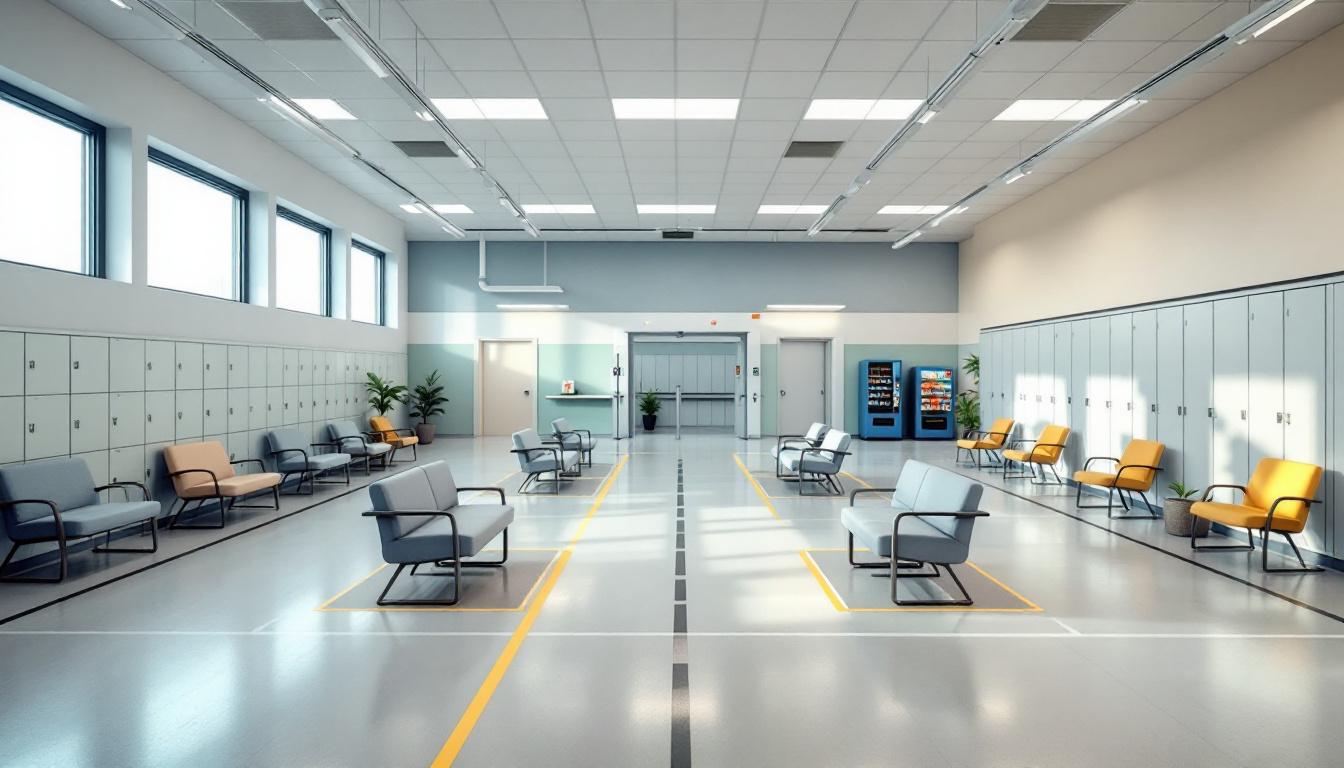
The Central Detention Center in San Bernardino processes more than 20,000 inmates annually, creating a dynamic environment where federal and county inmates follow structured daily routines. Housing over 200 federal inmates alongside more than 600 county inmates, the facility operates as a west coast hub for the U.S. Marshal's Service, with federal inmates frequently arriving and departing from locations throughout the United States and Pacific Rim Islands. This constant movement means that daily schedules typically accommodate both short-term holding and longer-term housing needs, with inmates generally following standard meal times, recreational periods, and program participation as determined by their classification level.
Inmates at CDC may have access to various educational and rehabilitation programs, including opportunities to earn their high school diploma and participate in substance abuse intervention services. These programs often take place during designated hours throughout the week, providing structure to the daily routine. The facility's role in housing both federal and county inmates means that programming schedules may vary depending on an individual's custody status and length of stay. Recreation time, medical appointments, and legal visits are typically scheduled around these core programming hours.
Family communication and visitation procedures at CDC likely follow standard protocols for correctional facilities in California, though specific visiting hours and policies may vary based on housing unit and inmate classification. The facility's location at 630 East Rialto Avenue in San Bernardino makes it accessible for families in the east valley area, where CDC serves as the primary booking facility for local law enforcement agencies. Given the facility's dual role housing both federal and county inmates, visitation policies may differ depending on an inmate's custody status, with federal inmates potentially having different communication privileges than those held on county charges.
Ready to Connect?
Start communicating with your loved one today
Search for an Inmate
